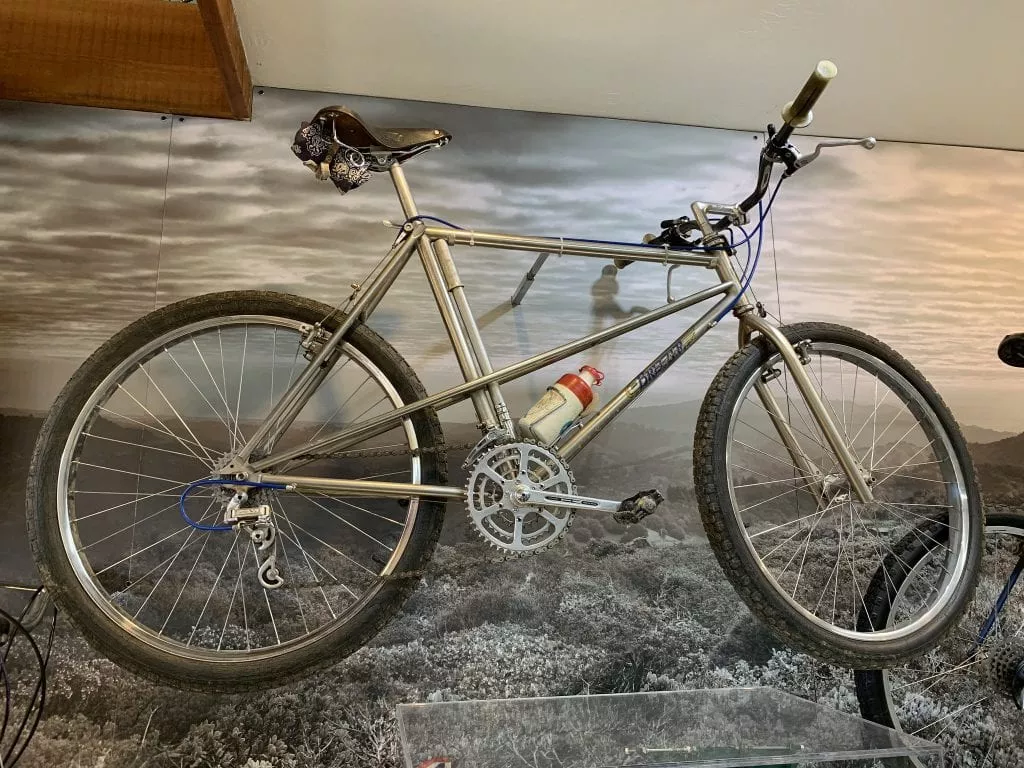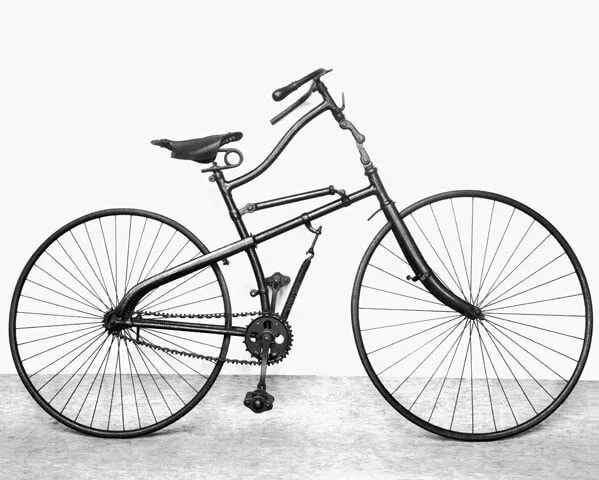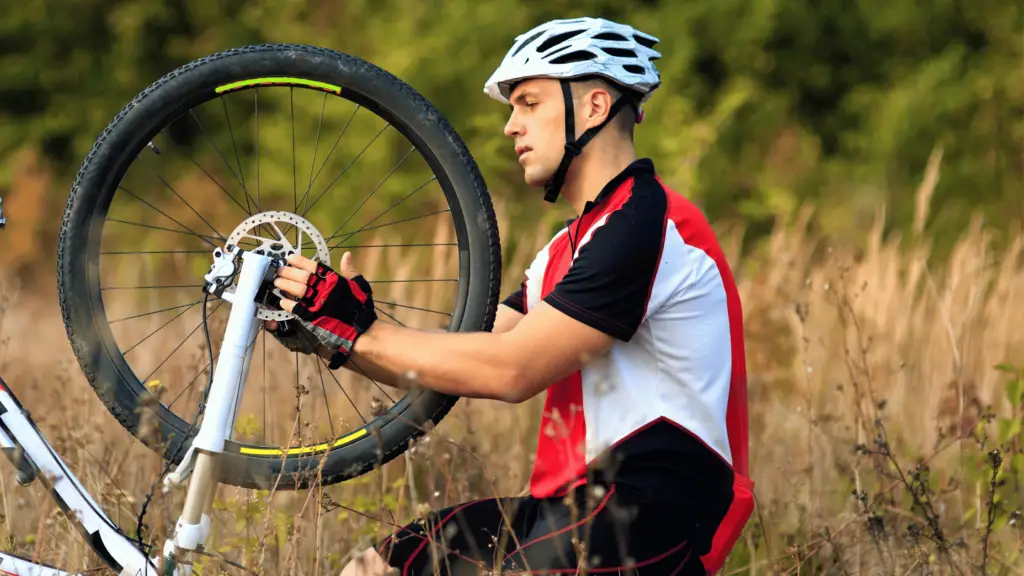Introduction
Welcome to the world of mountain biking, (Hardtail Mountain Bike)where adrenaline meets adventure! If you’re new to this exhilarating sport, one term you’ll frequently come across is “hardtail mountain bike.” In this article, we will delve into the characteristics, advantages, and considerations when it comes to hardtail mountain bikes. So, buckle up and get ready to explore the exciting terrain of hardtail mountain biking!
What is a Hardtail Mountain Bike?
A hardtail mountain bike refers to a type of mountain bike that features suspension forks at the front but lacks rear suspension. Unlike full-suspension bikes that incorporate suspension systems in both the front and rear, hardtail bikes focus on providing front-end suspension to absorb the impact of rough terrain while maintaining a solid rear frame. The absence of rear suspension makes hardtail mountain bikes lighter and more efficient for certain types of riding.

History of Hardtail Bikes
The history of hardtail mountain bikes can be traced back to the early days of mountain biking in the late 1970s and early 1980s. As the sport gained popularity, riders started modifying vintage cruiser bikes to handle off-road terrain. These modifications included adding wider tires and stronger frames.
In the 1980s, dedicated hardtail mountain bikes began to emerge. Companies like Specialized, Gary Fisher, and Diamondback played pivotal roles in introducing purpose-built frames with front suspension forks, improving shock absorption and overall performance on rough trails.

Throughout the 1990s and early 2000s, the mountain bike industry saw rapid advancements. Aluminum became the primary frame material, providing a balance between weight and durability. Suspension fork designs improved, offering better control and comfort.
Hardtails became popular in cross-country racing due to their efficiency and lightweight nature. The rise of competitive mountain biking further fueled the development of hardtail models optimized for speed and agility.
In recent years, hardtail mountain bikes have continued to evolve. Carbon fiber frames gained prominence, offering enhanced stiffness and weight reduction. Suspension technology has also advanced, resulting in more adjustable and capable front forks.
Today, hardtail mountain bikes remain a popular choice among riders of all skill levels. They offer versatility, engaging riding experiences, and are often more affordable compared to full-suspension bikes. With ongoing advancements in technology and design, the future of hardtail mountain bikes promises even more exciting possibilities for off-road enthusiasts.
When Hardtail Mountain Bikes Invented?
Hardtail mountain bikes were invented in the late 1970s and early 1980s. During this period, as the sport of mountain biking was gaining popularity, riders began modifying vintage cruiser bikes to better handle off-road terrain. These modifications included adding wider tires, stronger frames, and eventually front suspension forks. The purpose-built hardtail mountain bikes emerged as a dedicated category in the early days of mountain biking, laying the foundation for the diverse range of off-road bikes we have today.

The 1885 Whippet Safety Bicycle was one of the first bikes with a suspension system [3]
Specification of Hardtail Mountain Bikes
| Specification | Description |
| Frame Material | Aluminum, Steel, Carbon Fiber |
| Suspension | Front suspension fork |
| Wheel Size | 27.5″ or 29″ |
| Drivetrain | Various options (Shimano, SRAM) |
| Brakes | Disc brakes (Hydraulic or Mechanical) |
| Handlebars | Wide, ergonomic handlebars |
| Tires | Wide, knobby tires with aggressive tread patterns |
| Gearing | Multiple gears for versatile terrain |
| Weight | Lightweight compared to full-suspension bikes |
| Maintenance | Low maintenance compared to full-suspension bikes |
| Price Range | Affordable compared to full-suspension bikes |
| Suitable Terrain | Smoother trails, cross-country, climbing-intensive routes |
| Skill Level | Suitable for beginners and experienced riders |
Advantages of Hardtail Mountain Bikes
- Lightweight and Efficient: Hardtail mountain bikes are generally lighter than their full-suspension counterparts, making them easier to maneuver and pedal uphill. The absence of rear suspension also ensures that power from your pedaling is transferred more efficiently, allowing for a more responsive and engaging ride.
- Price and Maintenance: Due to their simpler design and fewer components, hardtail mountain bikes tend to be more affordable than full-suspension bikes. Moreover, they require less maintenance, as there are no pivots or rear shocks to service regularly. This makes hardtail bikes a popular choice for beginners and budget-conscious riders.
- Climbing Ability: The efficient power transfer and lighter weight of hardtail mountain bikes make them excellent climbers. With a solid rear frame, these bikes provide improved traction and control, allowing riders to conquer steep inclines with ease.
- Skill Development: Riding a hardtail mountain bike requires more technical skill and finesse, as the absence of rear suspension demands better line choices, body positioning, and precise control over rough terrain. Riding a hardtail can help develop essential skills that can be transferred to any type of mountain biking.
Components of a Hardtail Mountain Bike
To better understand hardtail mountain bikes, it’s essential to familiarize yourself with their key components. These include:
- Frame: The frame is the backbone of any mountain bike, providing structural integrity and determining the bike’s geometry, weight, and durability. Hardtail frames are typically made of aluminum, steel, or carbon fiber, with each material offering its unique characteristics.
- Suspension Fork: The front suspension fork is a crucial component of a hardtail mountain bike, as it absorbs shocks and vibrations from uneven terrain, improving comfort and control. Modern forks come with adjustable features, allowing riders to fine-tune their suspension settings based on riding preferences and trail conditions.
- Wheels and Tires: Hardtail mountain bikes feature rugged wheels and wide, knobby tires designed to handle off-road trails. The size of the wheels, commonly 27.5″ or 29″, affects the bike’s stability, rollover ability, and maneuverability. Tires with aggressive tread patterns provide excellent traction and grip on various surfaces.

- Drivetrain: The drivetrain comprises chainrings, cassettes, derailleurs, and shifters, working together to enable gear changes and power transmission. Hardtail mountain bikes often feature a wide range of gears to tackle steep climbs and fast descents. Common drivetrain manufacturers include Shimano and SRAM, offering various options for different riding styles and preferences.
- Brakes: The braking system of a hardtail mountain bike is crucial for rider safety and control. Disc brakes, either hydraulic or mechanical, are the most common choice, providing reliable stopping power even in wet or muddy conditions. Disc brakes offer better modulation and require less maintenance compared to traditional rim brakes.
- Cockpit and Controls: The cockpit includes components such as handlebars, stem, grips, and controls like shifters and brake levers. Handlebars come in different widths, rises, and shapes to accommodate different riding styles and preferences. Ergonomically designed grips ensure comfort and control during long rides, while strategically placed controls provide easy access to shift gears and engage the brakes.
How Does a Hardtail Compare to Other Bikes?
Hardtail MTB VS Full-Suspension MTB
| Aspect | Hardtail Mountain Bike | Full-Suspension Mountain Bike |
| Suspension | Front suspension fork only | Front and rear suspension |
| Weight | Lighter | Heavier |
| Climbing Efficiency | Better climbing efficiency | Slightly reduced climbing efficiency |
| Price Range | Generally more affordable | Generally more expensive |
| Maintenance | Lower maintenance requirements | Higher maintenance requirements |
| Trail Types | Suitable for smoother trails, cross-country riding | Versatile for various terrains and more aggressive trails |
| Comfort | Less comfort on rough terrain | More comfort on rough terrain |
| Maneuverability | Agile and responsive | Slightly less agile |
| Traction | Less traction on rough descents | Improved traction on rough descents |
| Skill Level | Suitable for beginners and experienced riders | Suitable for experienced riders who desire more performance and features |
Choosing the Right Hardtail Mountain Bike
When selecting a hardtail mountain bike, several factors should be considered to ensure a suitable match for your riding style and preferences:
- Frame Material: Decide between aluminum, steel, or carbon fiber frames based on weight, durability, and budget considerations. Aluminum frames are lightweight and affordable, steel frames offer a smooth ride quality and durability, while carbon fiber frames provide a combination of lightness and stiffness.

- Wheel Size: Consider whether you prefer the agility of 27.5″ wheels or the rollover ability and stability of 29″ wheels. Each size has its advantages, so test ride both options to determine your preference.
- Suspension Fork: Look for a suspension fork that suits your riding needs. Consider the amount of travel (the distance the fork can compress) and adjustability features like compression and rebound damping to fine-tune the fork’s performance.
- Components: Pay attention to the drivetrain, brakes, and other components. Choose a drivetrain with a suitable gear range for your intended terrain, and opt for reliable brakes that inspire confidence in all conditions.
- Fit and Comfort: Ensure the bike’s geometry and sizing are suitable for your body type and riding style. A comfortable fit will enhance control, efficiency, and overall enjoyment.
Tips for Riding a Hardtail Mountain Bike
Now that you have your hardtail mountain bike ready, let’s explore some tips to enhance your riding experience:

- Proper Body Positioning: Maintain a balanced and athletic position on the bike, with your weight centered between the front and rear wheels. Bend your elbows and knees to absorb shocks and allow for better bike handling.
- Line Choice: Select the smoothest and most efficient line when navigating technical terrain. Look ahead and anticipate obstacles to plan your trajectory effectively.
- Cornering Technique: Practice proper cornering technique by leaning the bike and keeping your body upright. This improves traction and stability, allowing you to maintain control through turns.
- Climbing Techniques: Learn to distribute your weight between the front and rear wheels when climbing steep inclines. Stay seated for traction or shift your weight forward for more power when standing.
- Descending Skills: Develop proper descending skills by shifting your weight back, maintaining a relaxed grip on the handlebars, and using your body as a suspension to absorb bumps and drops.
Conclusion
Hardtail mountain bikes offer an exciting and versatile option for off-road enthusiasts. With their lightweight design, efficient climbing abilities, and affordable price points, they are a popular choice among beginners and experienced riders alike. By understanding the components, choosing the right bike, honing your riding skills, and practicing regular maintenance, you can maximize your enjoyment and performance on the trails with a hardtail mountain bike.
Related Topics:
- How to Change a Mountain Bike Tire?
- When to Replace Mountain Bike Tires: A Comprehensive Guide | 2023
- How much does a mountain bike weigh?
- Best Mountain Bikes Under $500: How to Choose the Perfect Ride
FAQs
Are hardtail mountain bikes suitable for all types of trails?
A: Hardtail mountain bikes excel on smoother trails, cross-country terrain, and climbing-intensive routes. However, they may not provide as much comfort or traction on extremely rough or downhill trails.
Can I add a rear suspension to a hardtail mountain bike?
While it is technically possible to retrofit a hardtail with a rear suspension, it is not a common practice. The frame design and geometry of a hardtail are optimized for front suspension, and adding rear suspension may alter the bike’s handling characteristics.
How often should I service the suspension fork on my hardtail mountain bike?
The frequency of servicing depends on various factors such as usage, riding conditions, and manufacturer recommendations. Generally, it is recommended to have a professional suspension service every 50-100 hours of riding or annually, whichever comes first.
Can I ride a hardtail mountain bike on paved roads?
Hardtail mountain bikes are designed for off-road use but can be ridden on paved roads. However, the lack of rear suspension may result in a less comfortable ride compared to a dedicated road or hybrid bike.
Are hardtail mountain bikes suitable for beginners?
Yes, hardtail mountain bikes are a great choice for beginners due to their affordability, simplicity, and focus on skill development. They offer an excellent platform to learn and improve mountain biking techniques.
ikes we have today.













